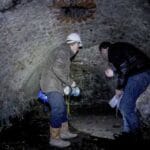The Paleo diet is frequently presented as a return to our ancestral roots, emphasizing lean meats, fruits, and vegetables. However, the reality of what prehistoric people ate to survive was often far more diverse—and sometimes downright bizarre. Facing scarcity and danger, our ancestors consumed foods that might make even the most dedicated modern Paleo follower think twice. Let’s delve into ten unexpected foods from the real Paleo diet.
Dog Stew
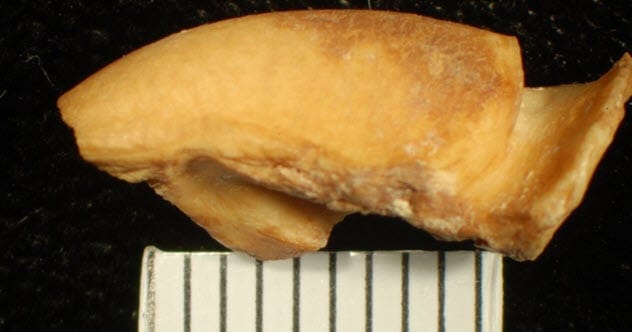
Imagine uncovering a 9,400-year-old fossilized poo (coprolite) containing a fragment of a domesticated dog’s skull. That’s precisely what researchers found in Hinds Cave, Texas. While dogs were often companions and guardians, they also served as a food source during famines or celebratory feasts. DNA analysis confirmed the skull fragment came from a domesticated dog, similar to short-nosed Native American dogs. Weighing around 30 pounds, it would have provided a substantial meal. The cooking method of choice? A hearty dog stew.
Fish Fermented in Pine Bark and Boar Skin
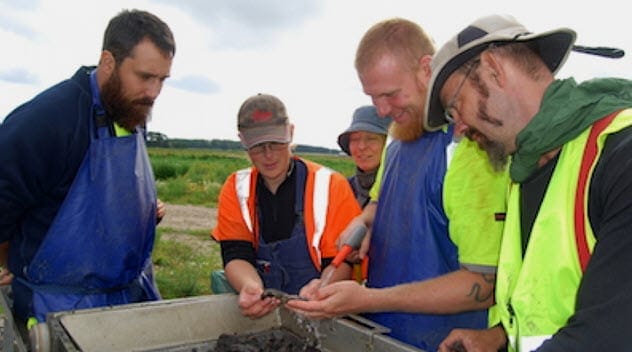
Tracing seafood consumption in ancient times is challenging due to the rapid decomposition of fish bones. However, a 9,200-year-old discovery in Blekinge, Sweden, revealed a Nordic fermentation technique that might turn your stomach. The process involved digging a pit, filling seal and boar skins with fish, and then covering the mixture with pine bark and seal fat. This stinky bag of fish rot was then buried, a testament to early humans’ creativity in the absence of modern preservatives. This discovery also suggests that settlements in the North began around the same time as those in the Fertile Crescent.
Crocodile and Hippo
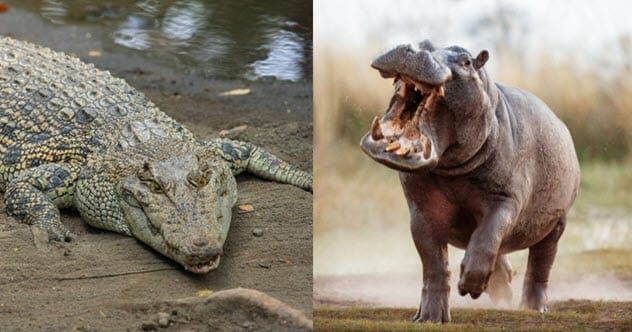
While we might believe mammoth steaks fueled our brain evolution, it’s equally probable that the nutrient-rich flesh of turtles, crocodiles, and hippos played a crucial role. A 1.95-million-year-old Kenyan site, well-preserved enough to recreate the ancient environment, offered evidence of such meals. Microscopic plant traces in the animals’ teeth indicated that our ancestors enjoyed grass-fed meats, eaten raw. Swamps, safer than grasslands populated by large predators, provided an abundant hunting ground.
Stomach Contents of Animals

Our ancestors weren’t picky eaters. Microscopic remains in 50,000-year-old Neanderthal dental plaque revealed traces of yarrow and chamomile, bitter plants that researchers believe found their way into hominid guts via the stomach contents of animals (chyme). Instead of wasting any part of the kill, including the stomach and organs, they consumed the partially digested contents for extra calories. This practice continues in some cultures today, with Inuits in Greenland consuming reindeer stomachs and Indigenous Australians enjoying kangaroo chyme.
Flour
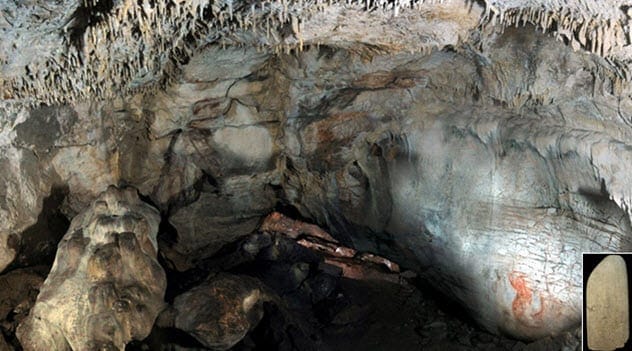
Flour isn’t just a product of the agricultural age; it dates back at least 32,000 years. In Puglia, Italy, at the Grotta Paglicci cave site, the paleolithic Gravettian people were grinding plant matter, preempting agricultural practices by millennia. They used a combo pestle and grinder—a hand-sized stone with a pointy end for smashing seeds and a flat end for grinding. Residue analysis revealed starches from wild oats, prehistoric millet, and acorns.
Deep-Sea Fish (Tuna)
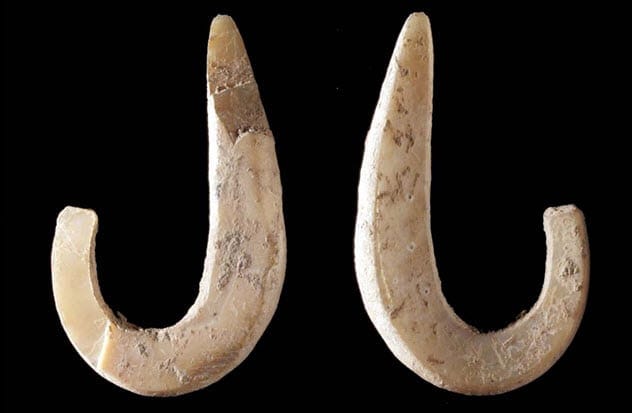
The humans of 50,000 years ago weren’t just huddled in caves; they were also skilled seafarers. A shelter in Jerimalai, East Timor, revealed a treasure trove of 42,000-year-old fish bones, with over half belonging to pelagic, deepwater-dwelling species like parrotfish and tuna. Researchers also found two fishing hooks hewed from shells, the oldest between 16,000 and 23,000 years old. This indicates that our ancestors used rafts and handmade hooks to catch tuna, showcasing advanced maritime skills.
Porridge

When meat was scarce, our 10,000-year-old ancestors turned to an un-Paleo-like approach: mixing starches into a preagricultural porridge. This was made possible by the invention of heat-resistant cooking pots. Plant wax and oil residues were discovered in prehistoric pottery at sites in the Libyan Sahara. These cooking vessels allowed prehistoric people to turn food scraps into meals like soup, stew, and porridge. Cooked plants also lasted longer, and fibrous or toxic plants could be made edible through simmering.
Loads of Roasted Sweet Potatoes

Inside Border Cave in the Lebombo Mountains, South Africa, the real Paleo people were indulging in roasted sweet potatoes over 170,000 years ago. These are the oldest roasted starches ever discovered. Researchers using scanning electron microscopes could still discern their internal structures, even after nearly 200,000 years. This ancient Hypoxis variant, like modern sweet potatoes, could be eaten raw, but cooking made it easier to digest and increased its caloric value. Growing year-round in clumps, Hypoxis sustained migrations through Africa, suggesting the Paleo diet featured more starch than meat in this region.
Rabbits
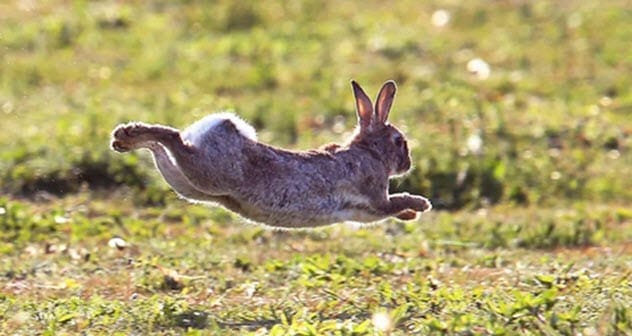
While a mammoth kill could feed a group for days, Neanderthals couldn’t rely solely on large game. They learned to build traps to catch small, agile prey like rabbits. Researchers found that animal remains at Neanderthal sites in France, dating back 400,000 years, consisted of 80 to 90 percent rabbit. The deliberate snapping of long bones suggests that Neanderthals chewed off the ends to suck out the bone marrow. This demonstrates their cleverness and adaptability, necessitating traps which reveal unexpected cognitive abilities for so-called “cavemen.”
Juniper-Roasted Escargot
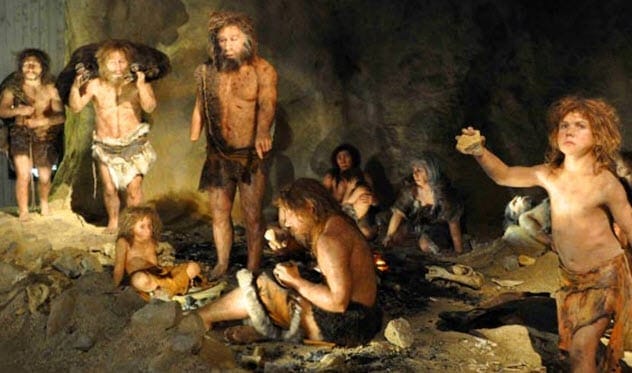
Though ancient humans occasionally enjoyed woolly rhino steaks, focusing on safer food sources was a smarter survival strategy. Over 30,000 years ago, Spanish Homo sapiens savored a delicacy favored by the snobby: escargot. Land snail remnants from the Cova de la Barriada cave site in Spain, dating back 30,000 years, predate previous escargot samples by 10,000 years. Cooked over juniper tree embers at around 707°F, these snails were a sophisticated appetizer in the Paleolithic era.
Conclusion
The real Paleo diet was far more diverse and resourceful than many modern interpretations suggest. From dog stew to fermented fish, and from roasted sweet potatoes to juniper-roasted escargot, our ancestors ate a variety of unexpected foods to survive. These discoveries highlight the adaptability and ingenuity of prehistoric humans.
What do you think about these bizarre Paleo foods? Would you try any of them? Leave your comment below!



